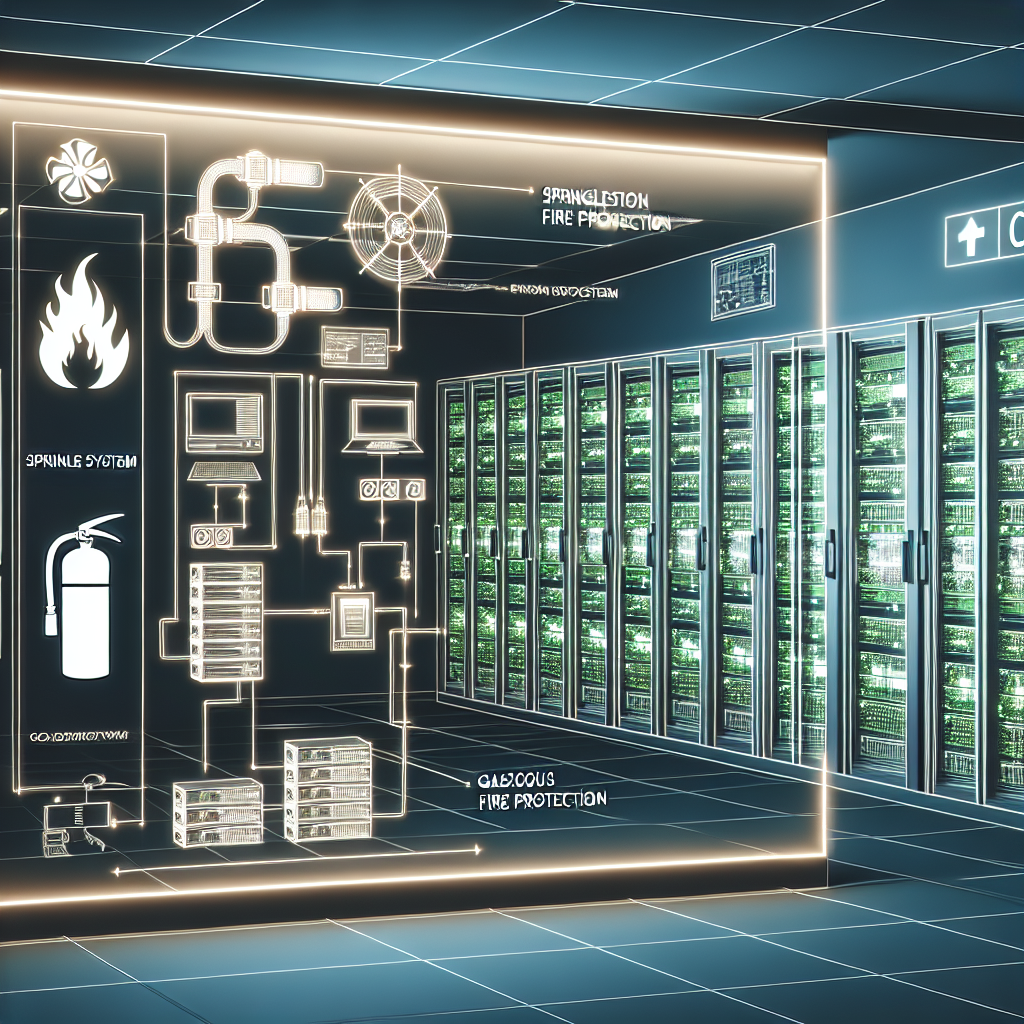Your cart is currently empty!
Ensuring Data Center Safety: A Guide to Fire Suppression Systems

Data centers are critical facilities that house and manage vast amounts of data, making them essential for businesses and organizations around the world. With the increasing reliance on digital information, ensuring the safety and security of data centers is of utmost importance. One of the key aspects of data center safety is fire suppression systems.
Fires can pose a significant threat to data centers, as they can quickly destroy valuable equipment and data. Therefore, having an effective fire suppression system in place is crucial to protect these facilities and prevent potential disasters. In this guide, we will discuss the importance of fire suppression systems in data centers and provide an overview of the different types of systems available.
Why are Fire Suppression Systems Important in Data Centers?
Data centers house a variety of equipment, including servers, storage devices, and networking gear, all of which generate heat during operation. If not properly managed, this heat can lead to electrical fires, which can spread rapidly and cause extensive damage. Fire suppression systems are designed to detect and suppress fires quickly, minimizing the risk of damage to equipment and data.
In addition to protecting equipment and data, fire suppression systems also help ensure the safety of personnel working in data centers. By suppressing fires quickly and effectively, these systems can help prevent injuries and save lives in the event of a fire emergency.
Types of Fire Suppression Systems for Data Centers
There are several types of fire suppression systems that are commonly used in data centers. The most common types include:
1. Clean Agent Systems: Clean agent fire suppression systems use gaseous agents, such as FM-200 or Inert gases, to suppress fires by removing oxygen from the fire and cooling the flames. These systems are effective at extinguishing fires quickly without leaving behind any residue that could damage equipment or data.
2. Water-Based Systems: Water-based fire suppression systems, such as sprinkler systems, use water to suppress fires by cooling the flames and reducing heat. These systems are effective at controlling fires and preventing them from spreading, but they may not be suitable for use in data centers due to the risk of water damage to equipment.
3. Pre-Action Systems: Pre-action fire suppression systems combine the features of water-based and clean agent systems by using water as the primary suppressant and a secondary agent, such as a gas or foam, to extinguish fires. These systems are designed to prevent accidental discharge of water and minimize the risk of damage to equipment.
4. VESDA Systems: VESDA (Very Early Smoke Detection Apparatus) systems are air sampling systems that can detect smoke particles in the air before a fire occurs. These systems provide early warning of potential fire hazards, allowing data center personnel to take action before a fire can spread.
Ensuring Data Center Safety
When it comes to ensuring data center safety, having a reliable fire suppression system in place is essential. Data center operators should work with fire protection professionals to assess the specific risks and requirements of their facility and determine the most appropriate fire suppression system for their needs.
Regular maintenance and testing of fire suppression systems are also crucial to ensure their effectiveness in the event of a fire emergency. Data center operators should develop and implement a comprehensive fire safety plan that includes regular inspections, testing, and maintenance of fire suppression systems, as well as training for personnel on fire safety procedures.
In conclusion, fire suppression systems play a critical role in ensuring the safety and security of data centers. By investing in the right system and implementing proper maintenance and testing procedures, data center operators can protect their facilities, equipment, and data from the devastating effects of fires.

Leave a Reply